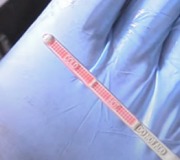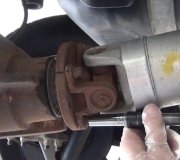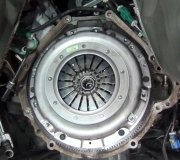Hi and thanks for using 2CarPros.
Interestingly, I checked each code and the diagnostic flow charts. The 700 is generic and non specific. The 730 and 740 flow charts contradict each other. Both indicate that if another code is present, it must be fixed before continuing. So, they aren't too helpful. However, I did note that there is one common issue that can pertain to each and that is line pressure. With that in mind, I suggest testing line pressure to confirm it is within the manufacturer's specs. Here are the directions for doing it. The attached pictures correlate with these directions and provide specific directions and technical information.
_________________________
TEST
WARNING:
- While testing, be careful of the rotating front wheels.
- Make sure lifts, jacks, and safety stands are placed properly.
CAUTION:
- Before testing, be sure the transmission fluid is filled to the proper level.
- Warm up the engine before testing.
1. Raise the vehicle.
2. Warm up the engine, then stop the engine and connect a tachometer.
Picture 1
3. Connect the oil pressure gauges to each inspection hole.
TORQUE: 18 Nm (13 ft. Lbs.)
CAUTION: Connect the oil pressure gauges securely; be sure not to allow dust and other foreign particles to enter the inspection holes.
4. Start the engine, and measure the respective pressure as follows.
- Line Pressure
- 1st Clutch Pressure
- 2nd, 3rd and 4th Clutch Pressure
5. Install a new washer and the sealing bolt in the inspection hole, and tighten to the specified torque.
TORQUE: 18 Nm (13 ft. Lbs.)
NOTE: Do not reuse old sealing washers; always replace washers.
Line Pressure/1st Clutch Pressure Measurement
1. Set the parking brake, and block both rear wheels securely.
2. Start the engine, and run it at 2,000 rpm.
3. Shift to [N] or [P] position, then measure line pressure.
NOTE: Higher pressure may be indicated if measurements are made in shift lever positions other than [N] or [P] position.
Picture 2
picture 3
4. Shift to [D4] position, hold the engine at 2,000 rpm, and measure 1st clutch pressure.
2nd, 3rd and 4th Clutch Pressure Measurement
1. Set the parking brake, and block both rear wheels securely.
2. Start the engine, and run it the engine at 2,000 rpm.
3. Shift to [2] position, then measure 2nd clutch pressure.
4. Shift to [D3] position, then measure 3rd clutch pressure.
5. Shift to [D4] position, then measure 4th clutch pressure.
Picture 4
picture 5
6. Shift to [R] position, then measure 4th clutch pressure.
Let me know if this helps or if you have other questions.
Take care,
Joe
Images (Click to make bigger)
Monday, January 21st, 2019 AT 6:18 PM









